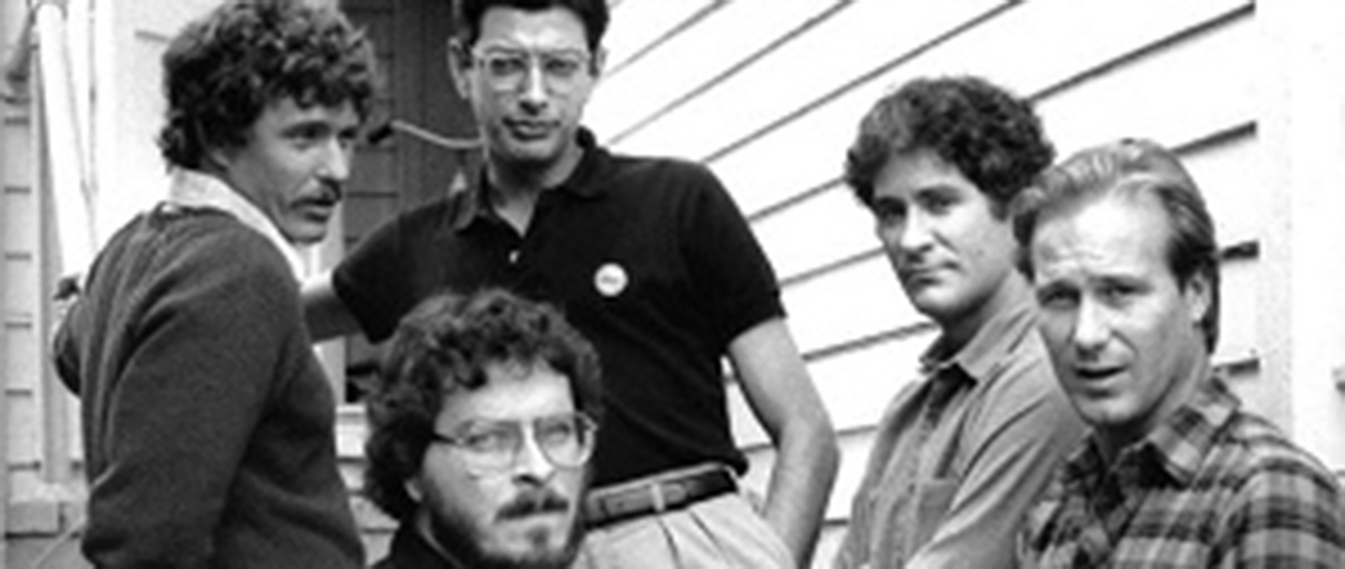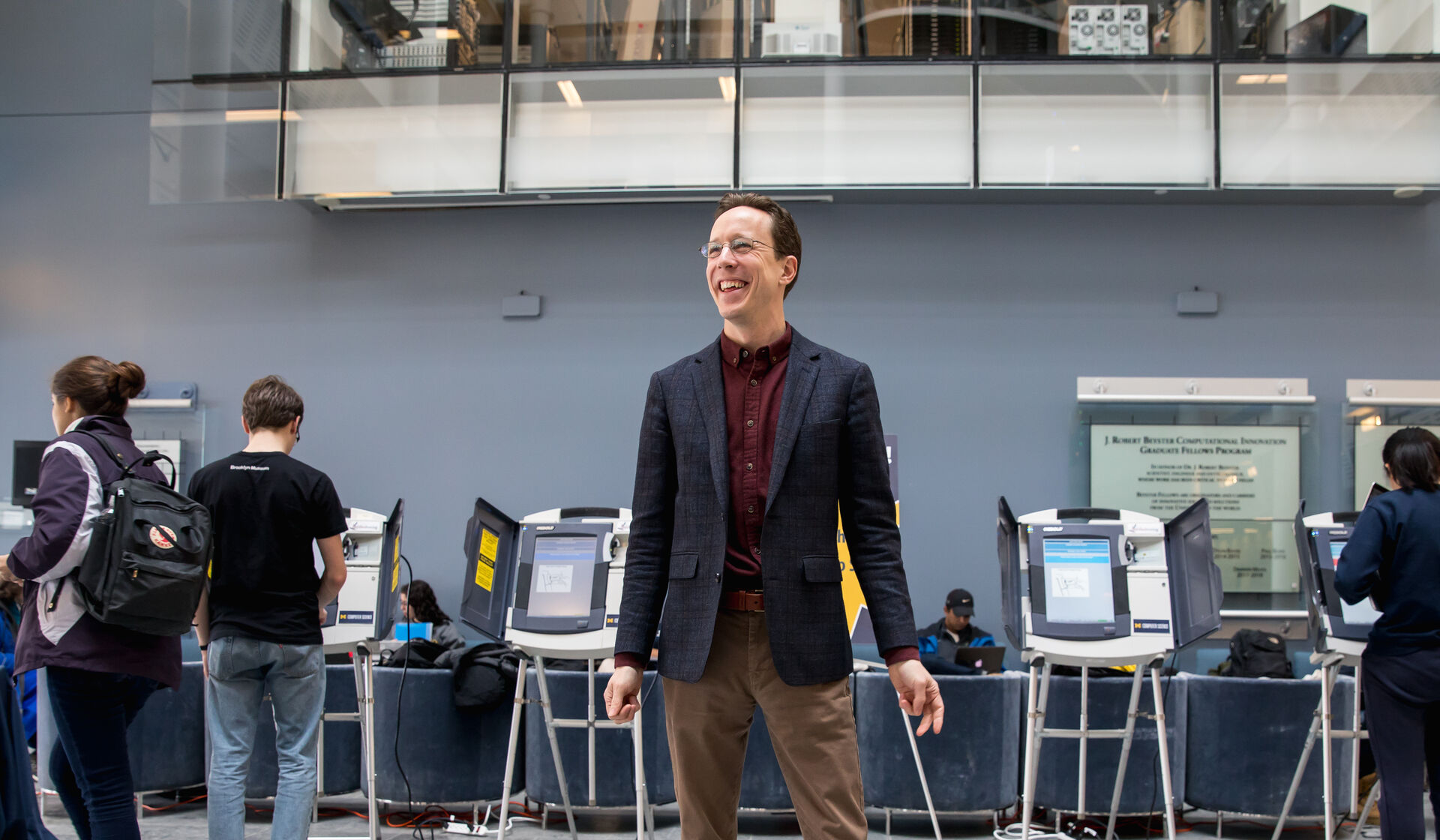In one of the scenes from “The Big Chill,” the characters Harold and Nick walk the early-morning streets of a southern town. The dialogue centers on Harold’s marriage. But many U-M alumni watching that scene momentarily focus on Harold’s T-shirt: a rumpled, fading, Maize and Blue shirt that many have folded in their own drawers. It’s one of several Michigan references woven throughout a movie about the reunion of seven U-M graduates.
The fact that screenwriter, film director, and U-M graduate Lawrence Kasdan, ’70, MA’72, HLHD’00, created characters who are Michigan alumni isn’t surprising. When the movie, which debuted 30 years ago this fall, was first in theaters, he told the Michigan Daily, “I see myself as all the characters in The Big Chill.”
They are among many characters in works of fiction who are U-M students and alumni. These range from classic novels (Francie in “A Tree Grows in Brooklyn”) to popular TV shows (Ronald Zellman on “The Sopranos,” Nadia Yassir on “24,” Gregory House on “House,” and Leo McGarry on “The West Wing”) to comic books (superhero Guy Gardner of the Green Lantern). In films, actor Harrison Ford has portrayed two Michigan Men—one real, one not. In “42,” he played Branch Rickey, JD 1911—the true-to-life U-M graduate who signed Jackie Robinson to play for the Brooklyn Dodgers. In “Air Force One,” Ford uttered the words “Get off my plane” as fictitious president and Michigan alumnus James Marshall.
So why was he a Michigan Man? “’Cause I couldn’t get in and wanted to.”
Some of these Michigan connections make sense. Like Kasdan, screenwriter Adam Herz, ’96, of the “American Pie” movie franchise is an alumnus. So the fact that one of his characters, Kevin Myers, attended Michigan shouldn’t be surprising. And while screenwriter Elizabeth Meriwether attended Yale, the two main characters from her film “No Strings Attached”—Emma Kurtzman (Natalie Portman) and Adam Franklin (Ashton Kutcher)—attended Michigan. A possible reason? Meriwether grew up in Ann Arbor.
Michigan alumnus and author Brad Meltzer, ’92, has given several of his characters a U-M pedigree. In his first book, “The Tenth Justice,” one of the characters wore a Michigan T-shirt because “that’s what I wore every day.”
“Since then, I’ve hid a Michigan reference in every novel I’ve done,” Meltzer said. “In my most recent thrillers—‘The Inner Circle’ and ‘The Fifth Assassin’—the president of the United States is a Michigan alum. Why let Gerald Ford have all the fun?”
He has even sneaked the University into his History Channel TV show, “Decoded.” For Meltzer, including Michigan references and making characters U-M graduates is done for one simple reason. “I love my school. Period,” he said. “Michigan changed my life. My professors there molded me into the writer I am today. This is the easiest way to say thank you—and get a million readers to see how great it is. Plus, it angers the Ohio State folks, which is icing on a big Maize and Blue cake.”
But what about those writers and creators who don’t have a personal connection to the University? Why do they award a character a U-M diploma when they, themselves, didn’t earn one? Doug Ellin, the creator of the HBO series “Entourage,” attended Tulane University. But when he was creating the characters for the show, he didn’t make memorable super agent Ari Gold a Tulane Green Wave like himself. Instead, Gold—played by Jeremy Piven—was a Michigan Wolverine. Ellin, in a Twitter response explaining why he gave the character Maize and Blue blood, admits to living a bit vicariously through Gold. So why was he a Michigan Man? “’Cause I couldn’t get in and wanted to,” Ellin tweeted.
Fictional U-M connections also include at least one fake scientific experiment. Javier Grillo-Marxuach, a Carnegie Mellon alumnus, was one of the creative minds behind the TV series “Lost.” In that series, the DHARMA Initiative, the secretive scientific experiment trying to harness the electromagnetic energy radiating from the island where the show was based, was started at U-M.
“When Craig Wright and I wrote (the episode) ‘Orientation,’ we wanted to give the DHARMA Initiative a home that indicated not only the cutting edge of academia, but also a tradition of liberal politics,” said Grillo-Marxuach. “While I am very proud of my alma mater, Carnegie Mellon, I not only felt that the University of Michigan portrayed both those qualities, but would also give me a chance to give a shout-out to my beloved adoptive hometown. I’m originally from Puerto Rico, but moved to Ann Arbor when I was 10. Though I did not go to U-M, it was a very important part of my upbringing and . . . a city I personally adore.”
The TV show “Sister Sister” sent the character Tia Landry to Ann Arbor for college. Executive producer Richard Hawkins says it made geographical sense. “The decision to go to U-M was based upon the world of the characters in the show,” he said. “My belief is that good writing tells the truth. Our series was set in Detroit. U-M is a top-rated state school that fit into the economic and geographic parameters of the characters on the series.
“Our characters were African-American and extremely social. U-M boasts a strong social network of sororities and fraternities and is known for its diverse student body. If I were the parent of these two young ladies—and as executive producer I was, in a way—U-M would be the perfect choice for them.”
Read about real Michigan graduates on our Notable Alumni page.





